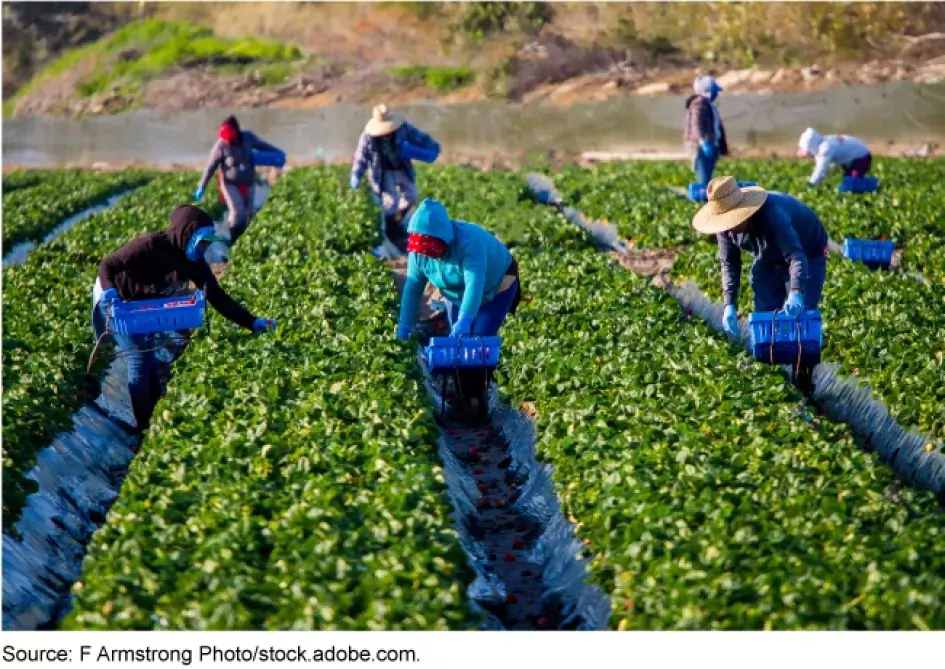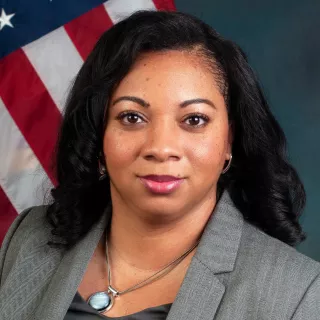On Human Trafficking Awareness Day, We Look at Government Efforts to Combat Trafficking and What More Needs To Be Done
Tens of millions of people are victims of human trafficking each year, according to one international organization’s estimate. Human trafficking victims are often held in slave-like conditions and forced to work in the commercial sex trade or other types of servitude. The U.S. government has also found forced labor overseas in various industries producing goods imported into the U.S., such as agricultural and seafood industries.
Several U.S. government entities work with international entities to combat human trafficking. Today, for National Human Trafficking Awareness Day (January 11), our blog post looks at our work reviewing these efforts and our snapshot highlighting areas where continued attention is needed.
Migrant Workers May Be Vulnerable to Human Traffickers
Image

Federal Agencies’ Efforts to Combat Trafficking
In our snapshot, we looked at some of the leading federal efforts to combat human trafficking overseas. These efforts are led by the Departments of State, Homeland Security, Defense (DOD), and Labor, and the U.S. Agency for International Development (USAID).
U.S. international anti-trafficking programs. State, Labor, and USAID manage development assistance projects aimed at preventing trafficking, prosecuting traffickers, and protecting survivors.
Global ranking and reporting. State and Labor publish reports with information about human trafficking and forced labor worldwide. For example, State's annual Trafficking in Persons Report ranks countries on the extent of their governments' anti-trafficking efforts.
Law enforcement. DHS’s U.S. Customs and Border Protection (CBP) works to uphold a law prohibiting imports of goods produced with forced labor. U.S. Immigration and Customs Enforcement has a role in investigating potential crimes related to forced labor.
Contracting and procurement oversight. State, DOD, and USAID oversee contractors for services overseas to ensure they follow anti-trafficking requirements to help protect foreign workers from traffickers. DOD also has policies and processes for its commissaries and exchanges worldwide—which provide retail goods to service members—to prevent the resale of goods produced with forced labor.
Challenges facing federal efforts
U.S. efforts to help combat human trafficking overseas face a number of challenges impacting their effectiveness. For example:
- Staffing gaps. We found that CBP had not assessed the workforce needs, such as staff numbers, types, locations, or specialized skills, for its Forced Labor Division, which was formed in 2018 to lead efforts to prevent forced labor imports. As a result, the division faced challenges enforcing the prohibition on imports made with forced labor, including having to suspend some ongoing investigations because of a staff shortage.
- Unclear roles. State, DOD, and USAID acquisition officials responsible for contracting and procurement oversight were not always aware of, or fulfilling, their anti-trafficking responsibilities. For example, we found that DOD did not consistently report trafficking violations and investigations of overseas contractors as required because of unclear guidance.
- Problems with information-sharing. We found that DOD officials had not used information available from other agencies to help prevent the resale of goods produced with forced labor at its commissaries and exchanges worldwide, which provide retail goods to service members.
In our work, we’ve made a number of recommendations to address these challenges, including to improve oversight of contracts as well as data reliability and information sharing. Agencies have taken action on some of them but other key actions remain unaddressed. For example, while DOD has provided guidance to contracting personnel highlighting and reinforcing anti-trafficking responsibilities, it still needs to clarify which offices have responsibility for receiving and reporting contractor trafficking violations and investigations, and it hasn’t yet required its officials to use information from other agencies about at-risk goods. Implementing these recommendations would better position to DOD to identify, assess, and respond to risks of human trafficking and forced labor.
Image

- Comments on GAO’s WatchBlog? Contact blog@gao.gov.
GAO Contacts
Related Products

GAO's mission is to provide Congress with fact-based, nonpartisan information that can help improve federal government performance and ensure accountability for the benefit of the American people. GAO launched its WatchBlog in January, 2014, as part of its continuing effort to reach its audiences—Congress and the American people—where they are currently looking for information.
The blog format allows GAO to provide a little more context about its work than it can offer on its other social media platforms. Posts will tie GAO work to current events and the news; show how GAO’s work is affecting agencies or legislation; highlight reports, testimonies, and issue areas where GAO does work; and provide information about GAO itself, among other things.
Please send any feedback on GAO's WatchBlog to blog@gao.gov.




